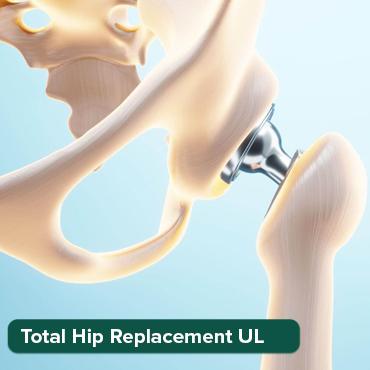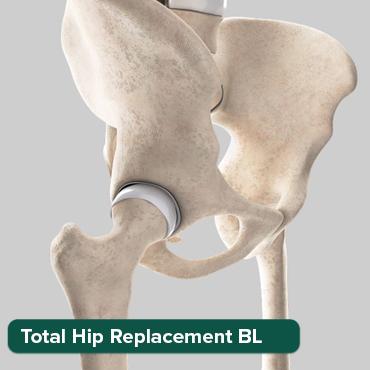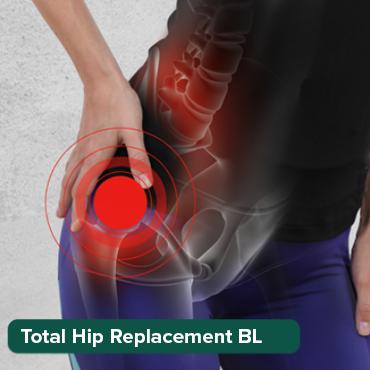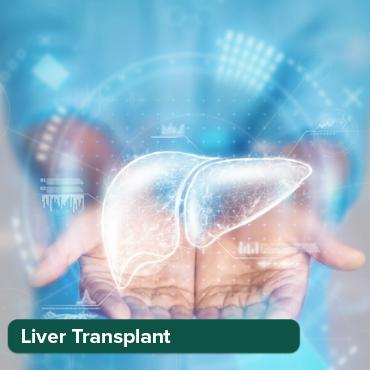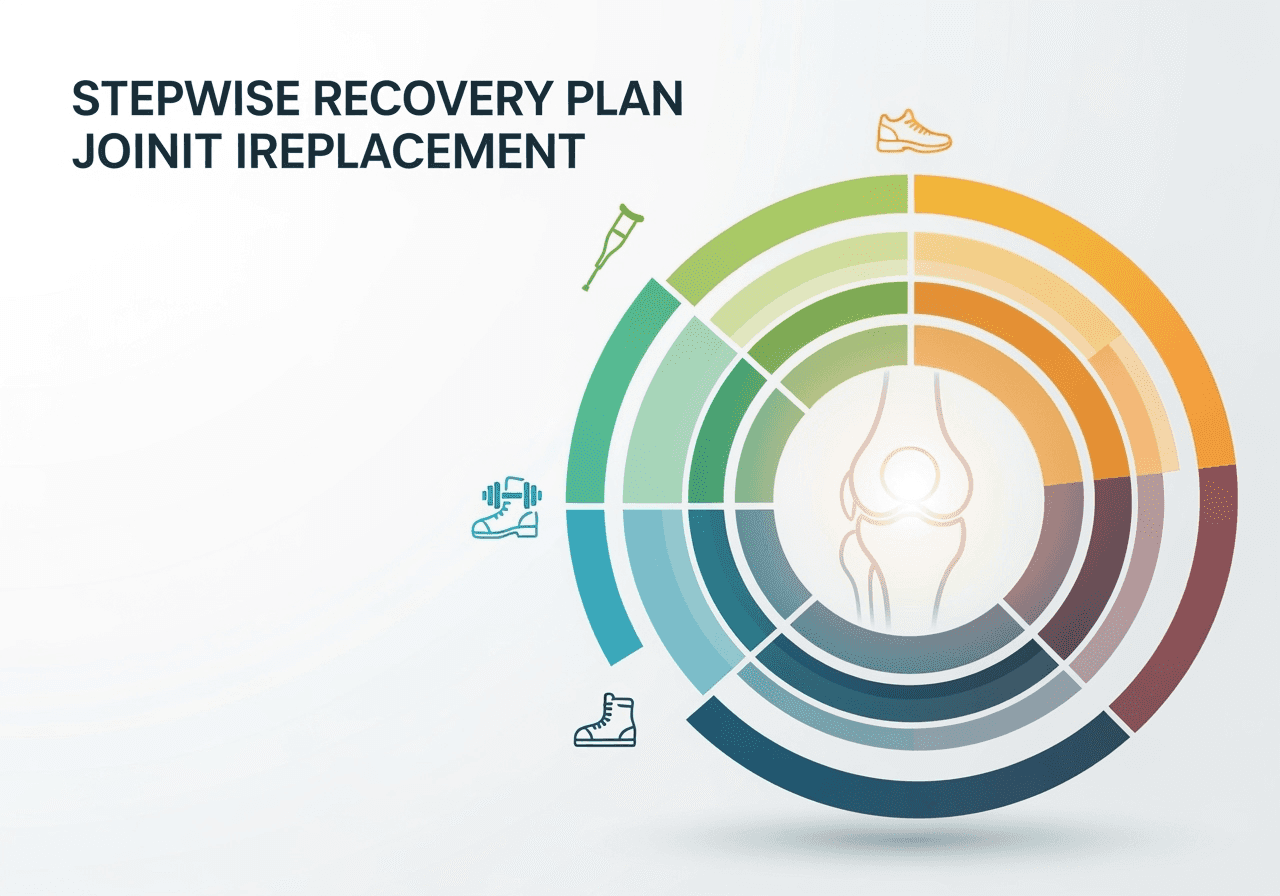
Stepwise Recovery Plan After Joint Replacement
30 Oct, 2025
 Healthtrip
Healthtrip- Where to Begin Your Joint Replacement Recovery Journey? < li>Why is a Stepwise Recovery Plan Important After Joint Replacement? < li>Who Benefits Most from a Structured Joint Replacement Recovery Plan?
- How to Create Your Personalized Stepwise Recovery Plan
- Examples of Successful Stepwise Recovery Journeys: Hospitals like Fortis Hospital, Noida, Memorial Sisli Hospital, Vejthani Hospital
- Common Challenges in Joint Replacement Recovery and How to Overcome Them < li>Conclusion: Empowering Your Recovery After Joint Replacement
Immediate Post-Op Care (Days 1-7)
The first week after joint replacement surgery is crucial for setting the stage for a successful recovery. Expect some pain and discomfort, which will be managed with medication prescribed by your surgeon at facilities like Memorial ?i?li Hospital in Istanbul or perhaps Vejthani Hospital in Bangkok. Focus on resting and protecting your new joint. Gentle ankle and foot exercises, along with deep breathing exercises, are vital to prevent blood clots and pneumonia. A physical therapist will guide you on safe transfer techniques, like getting in and out of bed, and using assistive devices such as walkers or crutches. Don't overdo it! Your body needs time to heal and adjust. Remember, Healthtrip can connect you with post-operative care services that provide in-home assistance and monitoring, ensuring you're never alone during this critical period. Think of it as having a pit crew cheering you on during the first lap of a race!
Most popular procedures in India
Early Rehabilitation (Weeks 1-6)
As you move into weeks one to six, the focus shifts towards strengthening your muscles and increasing your range of motion. Continue with your prescribed exercises, gradually increasing the intensity and duration. Physical therapy sessions at centers like Quironsalud Hospital Murcia or perhaps even Saudi German Hospital Cairo will be instrumental. Common exercises include heel slides, quad sets, and gentle knee bends. It's important to listen to your body and avoid pushing yourself too hard, which could lead to setbacks. Swelling and pain are normal, but contact your doctor if you experience increased redness, drainage, or fever. During this time, Healthtrip can help you find specialized rehabilitation centers offering personalized programs designed to optimize your recovery. We aim to ensure that you are well on your way to reclaiming your strength and movement, turning your recovery into a journey of triumph and achievement.
Intermediate Recovery (Weeks 6-12)
By weeks six to twelve, you should experience a significant improvement in your strength and mobility. You'll likely be able to walk longer distances with less pain, and may even start to reduce your reliance on assistive devices. Continue with your physical therapy, focusing on exercises that challenge your balance and coordination. Activities like stationary cycling and swimming are great ways to build strength without putting excessive stress on your joint. Remember to maintain good posture and body mechanics to protect your new joint. If you're feeling up to it, slowly reintroduce light activities, like gardening or cooking, always mindful of your limitations. Healthtrip can assist you in extending your recovery period by finding specialists that can provide you with the right recovery exercises, such as the physiotherapists available in Cleveland Clinic London, or any hospital listed on the website. It's about gradually easing back into life, one step at a time, celebrating each small victory with a smile and renewed confidence, making your comeback story a truly remarkable one.
Wellness Treatments
Give yourself the time to relax
Lowest Prices Guaranteed!

Lowest Prices Guaranteed!
Long-Term Maintenance and Care
Once you've reached the three-month mark and beyond, the goal is to maintain the progress you've made and prevent future problems. Continue with a regular exercise program to keep your muscles strong and your joint flexible. Low-impact activities like walking, swimming, and yoga are excellent choices. Be mindful of high-impact activities that could put excessive stress on your joint, especially in the long term. Maintaining a healthy weight is also crucial to minimize stress on your joint. Regular check-ups with your surgeon or physical therapist at hospitals like Mount Elizabeth Hospital in Singapore, or perhaps Tawfik Clinics in Tunisia will help ensure that your joint is functioning properly. Remember, Healthtrip offers ongoing support and resources to help you stay healthy and active for years to come. We connect you with wellness programmes and medical experts to achieve and guarantee your health requirements. Consider this time a journey of transformation and celebration, embracing each day with gratitude and a renewed appreciation for the simple joys of life.
Where to Begin Your Joint Replacement Recovery Journey?
Embarking on a joint replacement recovery journey can feel like navigating uncharted waters, but it doesn't have to be overwhelming. The initial steps you take are crucial for setting the stage for a successful and comfortable recovery. Think of it as laying the foundation for a new, improved you – one that moves with greater ease and less pain. The very first thing is to consult with your surgeon and physical therapist to understand the specifics of your surgery and their recommended recovery protocol. This involves attending pre-operative appointments, where you'll learn about the surgical procedure, potential risks, and what to expect immediately after surgery. This knowledge empowers you to approach the process with confidence and realistic expectations. These healthcare professionals will provide personalized advice tailored to your specific needs and medical history. It's not just about knowing what to do, but also understanding why you're doing it. Remember, knowledge is power!
Preparation is key! Start making necessary modifications to your home environment to ensure a safe and accessible space for your recovery. This may involve rearranging furniture to widen pathways, installing grab bars in the bathroom, and ensuring adequate lighting to prevent falls. Consider using assistive devices like walkers or raised toilet seats to minimize strain on your new joint. Enlist the support of family and friends who can assist with daily tasks such as meal preparation, transportation, and household chores. Don't hesitate to ask for help – it's a sign of strength, not weakness, and it allows you to focus on your healing. Planning for post-operative care, whether it's at home or in a rehabilitation facility, is crucial. Hospitals like Fortis Hospital, Noida, and Memorial Sisli Hospital are known for their comprehensive post-operative care programs, ensuring you receive the necessary support and guidance during this critical phase. Exploring options through platforms like Healthtrip can help you connect with hospitals offering specialized rehabilitation services. This proactive approach can significantly impact your recovery trajectory and overall well-being.
Finally, mentally and emotionally prepare yourself for the recovery process. Understand that it will take time and effort, and there will be ups and downs along the way. Cultivate a positive mindset, focusing on the progress you're making each day, no matter how small. Practice relaxation techniques such as deep breathing, meditation, or yoga to manage pain and reduce stress. Remember, your mental well-being is just as important as your physical health. Connecting with support groups or other individuals who have undergone similar procedures can provide valuable encouragement and insights. Sharing your experiences and hearing from others can help you feel less alone and more motivated to stay on track. Healthtrip can connect you with resources and support networks to help foster a sense of community and shared experience during your recovery journey. This holistic approach, encompassing physical preparation, environmental adjustments, and mental fortitude, will set you on the path to a smooth and successful recovery after joint replacement surgery.
Why is a Stepwise Recovery Plan Important After Joint Replacement?
Imagine building a house – you wouldn't start with the roof, would you? A stepwise recovery plan after joint replacement is like the architectural blueprint for your healing process. It's a carefully designed roadmap that guides you through each stage of recovery, ensuring that you progress at a safe and sustainable pace. This approach is crucial for several reasons. Firstly, it minimizes the risk of complications. Pushing yourself too hard too soon can lead to setbacks such as re-injury, inflammation, or even dislocation of the new joint. A stepwise plan allows your body to gradually adapt to the new joint, promoting optimal healing and stability. It's like slowly acclimating to a higher altitude – gradual progress prevents altitude sickness and ensures a smoother journey. Consider hospitals like Vejthani Hospital, which emphasizes gradual rehabilitation programs tailored to individual patient needs. Utilizing resources like Healthtrip can help you find healthcare facilities that prioritize this staged approach.
Secondly, a stepwise recovery plan fosters a sense of accomplishment and motivation. By breaking down the recovery process into smaller, manageable milestones, you can track your progress and celebrate each achievement along the way. This positive reinforcement can boost your morale and encourage you to stay committed to your rehabilitation program. Think of it like training for a marathon – you wouldn't attempt to run the entire distance on your first day. Instead, you gradually increase your mileage, building endurance and confidence with each run. Each step forward, no matter how small, contributes to your overall success. Seeing tangible progress, whether it's walking a few more steps or bending your knee a little further, can be incredibly empowering. It reminds you that you're on the right track and that your efforts are paying off. This sense of accomplishment is particularly important during challenging times, as it helps you stay focused on your long-term goals.
Furthermore, a structured plan allows for personalized adjustments based on your individual needs and progress. No two recoveries are exactly alike, and a one-size-fits-all approach simply won't work. A stepwise plan provides flexibility to modify the rehabilitation program as needed, ensuring that you're always working at an appropriate level of intensity. This is where the expertise of your physical therapist comes into play. They will continuously assess your progress and adjust your exercises and activities accordingly. It's like having a personal trainer who tailors your workout routine to your specific fitness level and goals. They'll challenge you when you're ready to push yourself further, and they'll provide support and guidance when you need it most. Remember, recovery is a marathon, not a sprint. A stepwise plan helps you pace yourself, avoid setbacks, and ultimately achieve your desired level of function and mobility.
Who Benefits Most from a Structured Joint Replacement Recovery Plan?
While a structured joint replacement recovery plan is beneficial for virtually everyone undergoing this procedure, certain individuals stand to gain the most from its methodical approach. Think of it as a tailored suit – it fits everyone, but it looks especially sharp on those who need a little extra assistance to achieve the perfect fit. Firstly, individuals with pre-existing medical conditions such as diabetes, heart disease, or obesity benefit immensely. These conditions can complicate the healing process and increase the risk of post-operative complications. A structured plan allows for careful monitoring and management of these conditions, ensuring that they don't impede the recovery process. It's like having a safety net – it provides an extra layer of protection against potential setbacks. Consider hospitals like Saudi German Hospital Alexandria, Egypt, which offer comprehensive pre- and post-operative care for patients with complex medical needs. Healthtrip can help you locate facilities with specialized programs for managing co-existing conditions.
Secondly, individuals with lower levels of physical fitness or mobility prior to surgery also benefit significantly. Joint replacement surgery aims to restore function and mobility, but it's important to start the recovery process from a solid foundation. A structured plan gradually rebuilds strength, flexibility, and endurance, allowing these individuals to achieve a higher level of function than they would without a carefully prescribed program. It's like building a house on a strong foundation – it ensures stability and longevity. Starting with gentle exercises and gradually progressing to more challenging activities can help these individuals regain their independence and improve their quality of life. They might need more personalized attention and a slower progression, which a structured plan facilitates. It's about setting realistic goals and celebrating small victories along the way.
Furthermore, individuals who are highly motivated and committed to their recovery are more likely to thrive with a structured plan. This plan provides the framework and guidance they need to stay on track and achieve their desired outcomes. It's like having a roadmap for a long journey – it helps you stay focused and avoid getting lost along the way. These individuals are proactive in their care, actively participating in their rehabilitation program and seeking out resources and support to enhance their recovery. They understand that the recovery process is a partnership between them and their healthcare team, and they are willing to put in the effort required to achieve their goals. Remember, the success of your recovery depends not only on the quality of your medical care but also on your own commitment and determination. A structured plan empowers you to take control of your recovery and achieve the best possible outcome.
Also Read:
How to Create Your Personalized Stepwise Recovery Plan
Embarking on a joint replacement recovery journey requires more than just willpower; it demands a well-thought-out, personalized plan. Think of it as charting a course for smooth sailing after a significant voyage. Before diving into the specifics, consider your pre-surgery condition, overall health, and personal goals. Were you an avid hiker aiming to return to the trails, or are you simply looking to walk comfortably without pain? Understanding your starting point and desired outcome is paramount. Begin by consulting extensively with your surgeon and physical therapist. Their expertise is invaluable in setting realistic expectations and identifying potential limitations. They can assess your individual needs and tailor a plan that aligns with your specific surgery type and recovery progress. Consider what a day looks like for you – are you someone who thrives on routine, or do you prefer a more flexible approach? Your personality and lifestyle will influence how you structure your recovery plan. Creating a detailed calendar or checklist can be immensely helpful in tracking your progress and staying motivated. Remember, this plan is not set in stone. It's a living document that you can adjust as you move through the recovery stages. Be prepared to modify your goals and activities based on your body's response and any unforeseen challenges. This proactive approach ensures you remain in control and optimize your recovery.
Examples of Successful Stepwise Recovery Journeys: Hospitals like Fortis Hospital, Noida, Memorial Sisli Hospital, Vejthani Hospital
To illustrate the concept of a stepwise recovery plan, let's peek into the journeys of individuals who have triumphed post-joint replacement, often with the support of renowned healthcare institutions. Imagine a patient at Fortis Hospital, Noida, who underwent a knee replacement. Their stepwise plan might have started with gentle ankle pumps and quad sets in the hospital bed, gradually progressing to assisted walking with a walker. As their pain subsided and strength improved, they transitioned to using a cane and eventually walking independently. This phased approach ensured they didn't overstress the new joint and allowed their body to heal effectively. Similarly, at Memorial Sisli Hospital, a hip replacement patient might have begun with isometric exercises and range-of-motion activities, slowly increasing the intensity and duration. Their plan could have included activities like light housework and short walks, gradually building up to more strenuous activities like gardening or dancing. The key here is the gradual and progressive nature of the rehabilitation. Vejthani Hospital in Thailand also exemplifies this approach. Their patients often benefit from comprehensive rehabilitation programs that integrate physical therapy, occupational therapy, and pain management. Their stepwise plans are meticulously tailored to each individual's needs, ensuring they receive the appropriate level of care and support throughout their recovery process. These examples demonstrate that a successful recovery isn't about rushing through the process but about patiently and consistently adhering to a well-structured plan. Choosing a hospital with a strong rehabilitation program, like Fortis Hospital, Noida, Memorial Sisli Hospital, or Vejthani Hospital, can greatly enhance your chances of a positive outcome by providing you with the necessary resources and guidance. Fortis Hospital, Noida, Memorial Sisli Hospital, Vejthani Hospital are listed on Healthtrip.
Common Challenges in Joint Replacement Recovery and How to Overcome Them
Even with the most meticulous plan, joint replacement recovery can present its share of hurdles. Picture this: you're diligently following your exercise routine, feeling optimistic, when suddenly pain flares up, or stiffness sets in. These challenges are common, but they don't have to derail your progress. One frequent obstacle is pain management. While post-operative pain is expected, persistent or escalating pain needs attention. Open communication with your doctor is crucial. They can adjust your medication, recommend alternative pain relief methods, or investigate potential complications. Stiffness is another common complaint. Combatting stiffness requires consistent adherence to your physical therapy exercises. Gentle stretching and range-of-motion activities can help improve flexibility and reduce discomfort. Don't push yourself too hard, but also don't become sedentary. Maintaining a balance is key. Swelling can also be a persistent issue, especially in the early stages of recovery. Elevating your leg, applying ice packs, and wearing compression stockings can help reduce swelling and improve circulation. Psychological challenges should not be overlooked either. The recovery process can be emotionally taxing, leading to frustration, anxiety, or even depression. Seeking support from family, friends, or a therapist can make a significant difference. Joining a support group can also provide a sense of community and shared experience. Finally, be aware of potential complications such as infection or blood clots. Watch for signs like increased redness, swelling, fever, or chest pain. Prompt medical attention is essential to address these issues effectively. Remember, overcoming challenges is an integral part of the recovery journey. By proactively addressing these obstacles and seeking appropriate support, you can stay on track and achieve your recovery goals.
Conclusion: Empowering Your Recovery After Joint Replacement
Joint replacement is a significant step towards regaining mobility and improving your quality of life. However, the surgery itself is only one piece of the puzzle. The recovery process is equally crucial, and a well-structured, stepwise plan is your roadmap to success. By understanding the importance of a personalized plan, learning from examples of successful recoveries, and proactively addressing potential challenges, you can empower yourself to take control of your healing journey. Remember that your recovery is not a race, but a marathon. Patience, consistency, and a positive attitude are your greatest allies. Celebrate small victories along the way, and don't be discouraged by setbacks. Seek support from your healthcare team, family, and friends. And most importantly, listen to your body. It will guide you on when to push yourself and when to rest. With dedication and resilience, you can emerge from this experience stronger, healthier, and more confident than ever before. Healthtrip is here to support you throughout this journey, connecting you with trusted healthcare providers and resources to help you achieve your recovery goals. Consider exploring Saudi German Hospital Alexandria, Egypt Alex West Compound -Mehwer El Taamear North Coast Road, 23 km, Alexandria Governorate 23511, Egypt, https://www.healthtrip.com/hospital/saudi-german-hospital-cairo for your joint replacement recovery plan.
Also Read:
Related Blogs

Top Medical Packages for Neuro Surgery Offered by Healthtrip
Detailed insights into neuro surgery – doctors, hospitals, technology, recovery,

Stepwise Recovery Plan After Neuro Surgery
Detailed insights into neuro surgery – doctors, hospitals, technology, recovery,

Choosing the Right Surgeon for Neuro Surgery
Detailed insights into neuro surgery – doctors, hospitals, technology, recovery,

Healthtrip Experts Explain the Complete Neuro Surgery Process
Detailed insights into neuro surgery – doctors, hospitals, technology, recovery,

Top Rated Hospitals for Neuro Surgery in India
Detailed insights into neuro surgery – doctors, hospitals, technology, recovery,
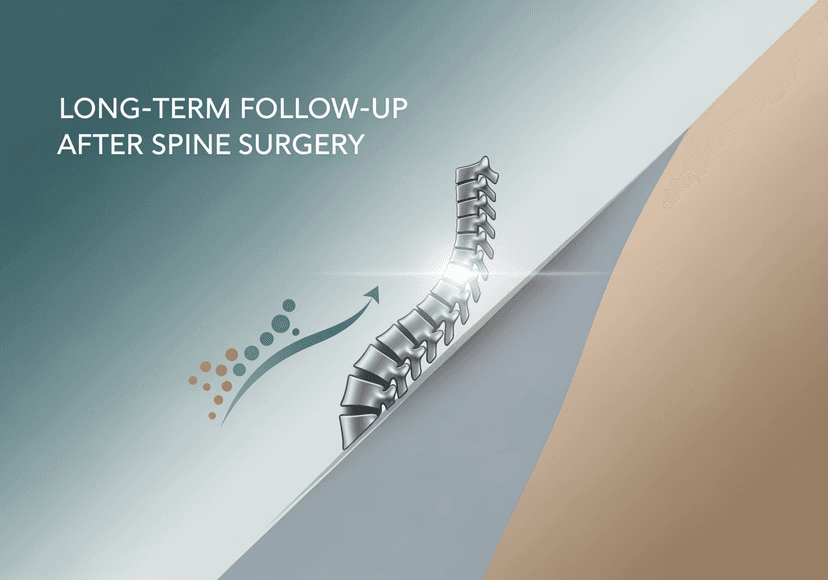
Long-Term Follow-Up After Spine Surgery
Detailed insights into spine surgery – doctors, hospitals, technology, recovery,
